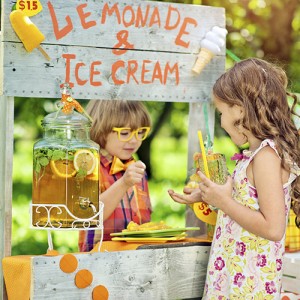On the Cover

Pandemic Rebound? First Start with a Clean Slate
St. George's freshened up its brand before reconnecting with shoppers whose habits COVID altered.
 By John Stanley
By John Stanley
During recent weeks a word has appeared repeatedly in retail language: co-branding. Granted, it has been around for a number of years, but it’s now taking on a new meaning and providing opportunities for retailers.
Co-branding has had numerous names, but in a nutshell it’s used to describe a scenario where two brands form an alliance to blend their retail offers to the consumer. The business objective is that both brands see an increase in turnover.
Co-branding has become more popular because of the changing retail scene and expectations of the consumer. More and more products are being purchased online and therefore retailers are finding it more difficult to build a successful business. For a consumer to go into the shops, they need the promise of an experience and/or of finding solutions to whatever issues they are trying to solve. Many retailers cannot provide this as they might only offer part of the solutions. This is where co-branding can play a part in developing retailers’ business models. If the consumer can be offered a solution, then the retailer is more likely to make the sale, and even make more money on each sale, as the consumer becomes less price-sensitive and more experience/solution focused.
The retail landscape is becoming full of co-branding ideas, although many people might have not identified the ideas as such. The fast food industry has been doing this for a number of years. The main anchor product for most fast food retailers is the hamburger or chicken, but co-branding with a drink company starts to change the product into a solution, a quick ready-made meal.
Co-branding starts with the consumer in mind. What solutions are they seeking? The most cost-effective and easiest way to do this is to enhance the offer to existing consumers from both brands, and to offer solutions to consumers who already engage with your business. This may mean communicating with them in completely new ways due to the synergy of both partners. This could include a handbag company co-branding with a shoe company to offer the solution, or a promotion that is launching in the UK under the Horticultural Trades Association banner, “It Starts with a Pot”. This is an interesting co-branding situation. Most consumers think of the plant as being the core product and the pot as the ancillary product. This promotion reverses the conventional thinking and starts by promoting the ancillary product first.
One supermarket in the USA has co-branded with a lifestyle keep-fit club and that club has become an integral part of the consumer experience at the store.
Another approach to co-branding is to look at a new consumer segment that the business has neglected. For me the best example is MacDonald’s. Until recent years I, like many adults, was not one of their consumers. Parents would take their children for a “happy meal” and often snack on the children’s French fries. That has now changed with a co-branding exercise and the establishment of McCafe in the store. It has a separate seating and service area that provides great coffee and pastries to business people, as well as parents. The co-branding has actually built the customer base by targeting consumers outside of the traditional target demographic.
Co-branding does not have to be something that only large retailers do between themselves to grow their market share. Independent businesses in a community can also co-brand to offer solutions to their local customers. Co-branding can occur on the High Street, where a number of local retailers can provide solutions. My youngest daughter’s experience serves as a case in point.
She is shopping around the High Street, trying to plan her wedding. However, as she shops, retailers are not offering solutions or advise, they are just providing their answers to their part of her wedding jigsaw puzzle. This, even though the main street provides everything she needs for her wedding: flowers from the florist, dress material, car rental, etc. This is a huge opportunity for all of these independent retailers to co-brand and offer complete wedding solutions. There are Web pages on wedding solutions, but the local retailers have not grabbed the opportunity to provide the same in their stores.
Co-branding will become more common as retailing changes to meet the new consumer’s needs. The goal might be to increase the average sale with existing customers, or it might be to attract shoppers from a new demographic segment. Who are your partners now, and who will they be in the future?
John Stanley is a conference speaker and consultant. In 2012, he was awarded the WA Small Business exporter of the Year. He works in 35 countries and is one of the world’s sought-after retail and small business presenters. His new conference presentation looks at the new consumer and how that affects your business. Follow John Stanley on Facebook or contact him at john@johnstanley.com.au.